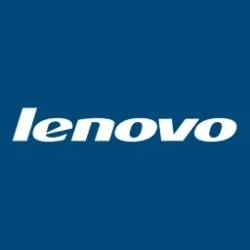Microsoft USB Blog:
The Blank Display (and Why It Can Still Happen)
Five minutes before a customer demo, I plug my 4K monitor into the USB-C port on a brand-new laptop. The display doesn’t light up, and now I’m scratching my head—the cable fit, so why isn’t it working?
USB4® carries the promise of a single USB Type-C® port that can do it all – charging, high speed data, multiple displays, and compatibility with Thunderbolt™ peripherals. However, Windows Diagnostics Data shows that 27% of PCs with USB4 have encountered a limited functionality notification, meaning that a customer plugged a USB-C device in, but a feature (alternate mode) that device needs was not implemented on the PC and Windows notified the user. The reversible USB Type-C connector isn’t the problem, the inconsistent implementations of USB-C port capabilities across the PC ecosystem is.
USB Power Delivery on USB-C ports can deliver up to 240 W of power, and USB4 (which is only available over USB-C) can deliver up to 80Gbps bandwidth (up to 120Gbps for Displays), DisplayPort Alt Mode, DisplayPort and PCIe tunneling, and support for Thunderbolt™ peripherals – all through one connector. But the promise of 'universal' in Universal Serial Bus (USB) only matches user expectations if every port delivers a consistent experience, regardless of laptop manufacturer implementation choices.
So why does the demo fail? Because not all USB-C ports are created equal. You can’t tell which ones deliver the full experience just by looking at them. In this case, if the PC doesn’t support DisplayPort Alternate Mode functionality, that monitor won’t light up even though the cable fits. PC manufacturers can implement ports that look identical but differ wildly in functionality: one may charge your laptop and run a 4K display; another might only deliver USB 2.0 data speeds. The USB specification allows this, and without clear enforcement, the consumer experiences frustration, guesswork, and endless troubleshooting.
This isn’t new. As USB specification versions have evolved and added new capabilities, the complexity has sometimes left consumers in the dark, especially when ports aren’t labeled clearly. Most people don’t know what “USB 3.2 Gen 2x2” means or which port supports what features. That’s why we’re pleased to see the USB-IF introduce simpler, clearer branding guidelines like “USB 40Gbps” and “USB 80Gbps”, making it much easier for everyone to understand exactly what each port can do.
We think it’s important for this clear branding to carry through to the actual customer experience with USB-C ports on Windows 11 PCs. While the USB specifications give PC manufacturers the ability to choose which optional features the port supports, we set out to establish a minimum bar for USB-C port capabilities on PCs.

Figure 1 Table of the capabilities required by WHCP for mobile Windows systems
The Windows Hardware Compatibility Program (WHCP) comes in to turn this table into reality – turning optional features into mandatory ones, and ensure a consistent level of performance you can count on. The table above reflects what you can reliably expect from USB-C ports on WHCP-certified mobile PCs.
Some USB 40Gbps and USB 80Gbps ports on Windows 11 PCs are also certified by Intel under the Thunderbolt™ brand, allowing them to be labeled as Thunderbolt™ 4 or Thunderbolt™ 5, respectively. You can rest assured that Thunderbolt™-branded ports meet all the rigorous requirements of both Microsoft’s WHCP program and Intel’s Thunderbolt™ program. Additionally, to qualify to use the Thunderbolt™ brand from Intel, the product must first be certified by the USB-IF.
Two Firm Promises of USB-C on Windows 11
When we set out to improve the USB-C experience with WHCP, we started by defining the customer promises that we wanted to achieve. This came down to two simple goals:- USB Data, Charging and Display “just works” on all USB-C ports: Your favorite USB 1, USB 2, and USB 3 peripherals, chargers and displays will work exactly as advertised on any USB-C port on your WHCP-certified Windows 11 device.
- Systems that support USB 40Gbps also give full compatibility with USB4 and Thunderbolt™ 3 peripherals: On a WHCP-certified USB 40Gbps system, you can also plug in any USB4 or Thunderbolt™ 3 device and trust it will work every time on every port.
What every USB-C port needs to nail WHCP compliance
All mobile systems with USB-C ports
Meeting our first customer promise, that USB Data, Charging and Display “just works” on all USB-C ports, requires any WHCP compliant mobile PC with USB-C to support a baseline set of requirements. No matter what speeds your USB-C ports support, every port can be expected to deliver the following:- You can trust that your devices will work flawlessly, avoiding the frustration of unreliable connections, as we require USB-IF certified silicon in the PC. This guarantees that every connection is robust and reliable through USB-IF certification or equivalent electrical compliance, rigorously tested for compatibility in a lab.
- Your devices will charge efficiently and consistently as every USB-C port on a certified PC needs to support USB Power Delivery charging.
- DisplayPort Alt-Mode is required for all USB-C ports to support connecting monitors. When you plug a display in, you can feel confident it will work well because the ports have to be VESA certified.
- The Microsoft driver stack requirement means PCs are validated using Microsoft’s built-in USB controller drivers. This ensures that security and feature updates arrive via Windows Update, keeping your system secure and up-to-date without any hassle.
All Mobile Systems Advertising USB 40Gbps or 80Gbps Support
WHCP qualified systems with USB 40Gbps or 80Gbps also deliver the second customer promise, full compatibility with USB4 and Thunderbolt™ 3 peripherals, ensuring top-tier performance and compatibility:- This ensures lightning-fast data transfers, making large file transfers and high-speed internet connections a breeze. Baseline bandwidth means every certified Windows 11 PC advertising USB 40Gbps must sustain full speed 40Gbps links on all USB-C ports.
- To enable you to expand your system’s capabilities without any compatibility issues, we require PCI Express tunnelling that allows external GPUs and NVMe enclosures to work seamlessly because host routers tunnel PCIe on every port.
- You can continue using your favorite peripherals without any interruptions as we require Thunderbolt™ compatibility ensures that existing Thunderbolt™ docks remain plug and play.
- DisplayPort requirements ensure support for up to two 4K monitors at 60Hz, providing a stunning visual experience for your work and entertainment.
- Finally, sleep and resume resilience ensures that host routers survive low-power states without dropping tunnels. This means your system remains reliable and connected, even when it’s in sleep mode.
- WHCP eliminates the worry of powering devices you plug-in by requiring uniform port power requirements ensures that each USB 40Gbps port sources at least 15 W (7.5 W on tablets).
- WHCP already covers the next spec bump. Any PC that advertises USB 80 Gbps must meet all the above requirements, while also supporting operation in symmetric 80 / 80 Gbps mode and asymmetric 120 / 40 Gbps mode for increased display bandwidth.
How we enforce it: The Hardware Lab Kit
That “it just works” moment isn’t magic; it’s the result of a tightly choreographed process:- Translate Pain into Policy
We reflect on user feedback, telemetry, and field failures—like the left-port-only monitor issue—and convert each into a discrete WHCP requirement with acceptance criteria. - Author Automated Tests
Our team writes reproducible, automated Windows Hardware Lab Kit (HLK) test cases for every requirement: signaling timing, speed negotiation, power delivery, DisplayPort/PCIe tunnels, sleep/resume resilience, and more. - Partner-Led Validation
OEMs, silicon vendors, and accessory brands run these HLK tests and submit logs to Microsoft. Any failure halts certification until the issue is resolved in hardware or firmware. - Continuous Evolution
WHCP updates with every Windows release. New tests and criteria flow via Windows Update—so fixes and feature enhancements reach end users without new hardware.
If You’re an OEM or Accessory Maker
Robust USB on Windows requires end-to-end testing—protocol compliance, signal integrity, power negotiation and security—and Microsoft’s USB Test Tool (MUTT) suite of hardware and automated scripts streamlines WHCP certification. Download MUTT and dive into the full device-, silicon-, and system-level requirements (including test collateral) for USB4 on Microsoft Learn:- MUTT suite: Overview of Microsoft USB Test Tool (MUTT) Devices - Windows drivers
- USB4 requirements: Universal Serial Bus 4 (USB4™) required testing
Source:

Ending USB Type-C® Port Confusion: How Windows 11 WHCP Delivers Consistent Performance on Certified Devices
Confused by blank displays or missing features on your USB-C ports? Not all ports are created equal. Learn why even the newest Windows 11 PCs can fail...








